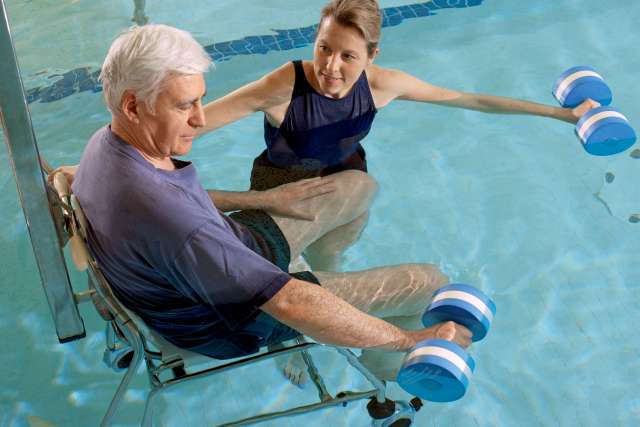Dear Doctors: A friend of mine was recently diagnosed with Parkinson's disease. She has been told that exercise -- especially swimming -- can be helpful. She isn't a strong swimmer and is afraid to try now. Why are people with Parkinson's advised to swim? Are there any drawbacks?
Dear Reader: Parkinson's is a progressive neurological disease that causes changes to the centers of the brain that control movement. These lead to decreased production of a neurotransmitter known as dopamine, which is crucial to our ability to generate smooth and sustained movement. Over time, Parkinson's interferes with walking, balance, strength, endurance and coordination. It can also adversely affect mood, emotions, sleep and cognition.
There is no cure for Parkinson's disease at this time. But certain medications, and combinations of medications, can help to manage symptoms.
Your friend is correct about exercise being an important element in managing the symptoms of Parkinson's disease. A body of research has shown that regular exercise can help maintain balance and mobility, improve posture, enhance mood and aid in the performance of daily tasks. Some studies suggest that exercise can sometimes play a role in slowing disease progression.
A well-rounded exercise program includes strength training, aerobic activity and stretching. Among the options are aquatic exercises. And while this category of exercise does include swimming, it also extends beyond that. As the popularity of water aerobics, Zumba, pool walking and pool running have shown, virtually any upright exercise can be transferred to water. That means your friend can get the benefits of exercising in water without swimming.
Water offers two important benefits to patients with Parkinson's. One is buoyancy. It eases the force of gravity, which in turn eases stress on the joints. Buoyance also helps to support balance, which can lessen the risk -- and the fear -- of falling. The other benefit is the resistance that occurs when moving in or through water. Simply walking through water causes the muscles to engage and do gentle but sustained work. This combination of resistance and buoyancy creates a kind of safety net that allows someone to safely try larger and more sustained movements. These can help to build strength and maintain flexibility.
In asking about drawbacks to water exercise, you have broached an important topic. Anyone with movement limitations, including patients with Parkinson's, should never be in a pool alone. Due to the progressive nature of the disease, which includes a decrease in coordination, patients with Parkinson's are at increased risk of drowning. This is particularly true of swimming, which requires different but coordinated actions by the legs and arms.
People with Parkinson's often develop difficulty in the regulation of body temperature. That makes it important to consider water temperature when performing aquatic activities, both in outdoor and indoor settings.
If your friend decides to try aquatic activities, she should begin by checking in with her medical care team. They will advise her about the level of activity that is appropriate for her specific condition. They can also refer her to specialized classes, or to a physical therapist experienced in working with patients with Parkinson's.
(Send your questions to [email protected], or write: Ask the Doctors, c/o UCLA Health Sciences Media Relations, 10960 Wilshire Blvd., Suite 1955, Los Angeles, CA, 90024. Owing to the volume of mail, personal replies cannot be provided.)





